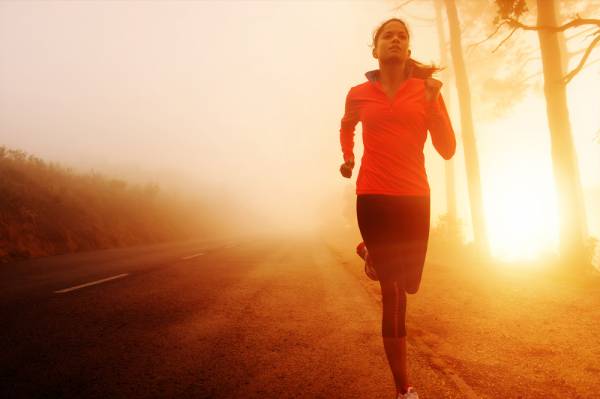There are millions of active and healthy females out there who like to run, train, and compete. Like males, these females possess a variety of body-types – tall, short, thin, thick, long-limbed, short-limbed, wide hips, and narrow hips. One additional factor for females is breast size. It may be a taboo topic, but the reality is it can be a factor when it comes to performance.
Please understand that research has no boundaries, and what follows is no exception. For the sake of comfort, support, and maximizing performance, let’s take a look at breast size and its effect on the active female.
A unique study performed in the United Kingdom sought to analyze differences in breast kinematics between breast cup sizes during running and the ability of breast and body size measurements to explain these differences (Kinematics is the study of the motion of a body or object and systems of bodies and objects). Forty-eight women participated in the study. Their mean age was 26 years, mean height was 5’ 5”, and mean weight was 138 pounds. Their chest girths ranged from 32 to 38 inches and bra cup size ranges from A to G.
Other measurements taken for the study included breast girths, a confidential anthropometric profile, suprasternal (the indention at the base of the neck between the clavicles) notch to nipple distance, and body mass index. Breast mass was based on an estimate.
Multiplanar relative breast displacement, velocity, and acceleration were recorded while the participants ran on a treadmill. Differences in breast kinematics were compared between cup sizes before and after allometric and polynomial scaling using major breast and body size measures (allometric refers to relative part size to entire organism and polynomial refers to the sum of algebraic terms).
Let’s cut to the quick. What did they find? All kinematic variables increased significantly with breast cup size. (Translation: bigger breasts moved faster and farther).
Bare-breasted displacements across A to G cups:
- Mean anterior-to-posterior ranged from 1.18 to 2.32 inches.
- Mean medial-to-lateral ranged from .7 to 2.44 inches.
- Mean vertical ranged from 1.65 to 3.89 inches.
Breast velocities:
- Anterior-to-posterior ranged from 1.4 to 4.08 feet per second (F/S).
- Medial-to-lateral ranged from 1.35 to 5.6 F/S.
- Vertical ranged from 2.68 to 7.13 F/S.
Breast acceleration:
- Anterior-to-posterior ranged from 38.26 to 158.9 F/S.
- Medial-to-lateral ranged from 51.1 to 170.5 F/S.
- Vertical ranged from 76.44 to 218 F/S.
Finally, scaling models discovered that breast mass was the only anthropometric measure to, time after time, show differences in breast kinematics between cup sizes.
The researchers concluded these practical findings:
 Bare-breasted kinematics significantly increased with cup size during running.
Bare-breasted kinematics significantly increased with cup size during running.- Differences in breast displacement, velocity, and acceleration between cup sizes could be predicted by estimating breast mass based on conventional brassiere sizing.
- This information can be helpful to brassiere manufacturers in their pursuit of the most effective sports bras for various sizes.
As an active female, it is prudent for you to find the most appropriate device based on your breast size. Comfort, support, and ultimately performance should be the objective. Achieving this also means one less issue to deal with in your active lifestyle.
Photos courtesy of Shutterstock.






